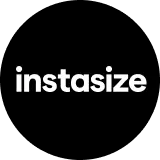Are Etsy Ads Worth It? Let's Dive In!
Discover if Etsy Ads are worth your investment. We break down the pros, cons, and share insights to help you make an informed decision.


Instagram Analytics, also known as Instagram Insights, is a powerful tool provided by Instagram that allows users, especially businesses and influencers, to better understand their follower demographics and behaviors. This tool provides important information about how users interact with your posts, stories, and profile. With Instagram Analytics, you can measure data like impressions, reach, website clicks, and more.
It's crucial to understand that Instagram Analytics is only available to Instagram Business or Creator accounts. Thus, if you're using a personal account, you'll need to convert it to access these features. The switch is free and comes with additional capabilities, like adding contact information and promoting posts.
With Instagram Analytics, you can track a lot of different metrics that can provide valuable insights. Some of these metrics include follower growth rate, website click-through rate, top-performing posts, story replies, profile visits, and saves. Each of these can offer you a deeper understanding of how your content is performing and how you can improve.
Instagram Analytics plays a pivotal role in business growth. It provides insights that can drive your content strategy and marketing efforts, leading to better engagement, more followers, and ultimately, increased sales or conversions. Without Instagram Analytics, businesses are essentially flying blind, unable to precisely measure the effectiveness of their Instagram efforts.
For example, understanding which of your posts generate the most engagement can help you craft a more effective content strategy. You can focus more on the types of content that resonate with your audience, ensuring that your efforts aren't wasted on posts that don't deliver. Similarly, by understanding when your audience is most active on Instagram, you can schedule your posts for those times, increasing the likelihood that they'll be seen and engaged with.
Additionally, Instagram Analytics can also provide valuable insights into your audience demographics. This includes information about their age range, gender, location, and the times they're most active on Instagram. Having this data at your fingertips can help you better tailor your content and marketing strategy to match your audience's interests, behaviors, and schedules, maximizing your potential reach and engagement.
Tracking user engagement is a fundamental component of Instagram Analytics. User engagement refers to how individuals interact with your content, and it is a key indicator of your content's performance and your audience's interest levels. Instagram Analytics provides several metrics to measure user engagement, including likes, comments, shares, saves, story views, and more.
Likes and comments are among the most basic metrics for assessing engagement. If a post generates a lot of likes or comments, it's a good indication that it resonates with your audience. Shares and saves are also crucial because they show a deeper level of engagement. A user who shares your content or saves it for later is highly engaged and values your content enough to revisit it or share it with their followers.
Another valuable engagement metric available in Instagram Analytics is the number of views and replies to your Instagram stories. A high number of views indicates that your audience is regularly checking in to see your latest content, while a high number of replies shows that your stories are sparking conversations and eliciting responses.
While Instagram's in-built analytics tool provides essential insights, there are several third-party tools available that can provide even more detailed analytics and help you enhance your Instagram strategy. Some of these tools include Iconosquare, Hootsuite, Sprout Social, and Later.
Iconosquare is a dedicated Instagram analytics tool that provides a wealth of information about your Instagram account, including follower growth, engagement rates, best times to post, and more. Hootsuite, on the other hand, is a comprehensive social media management tool that includes an Instagram analytics feature, allowing you to monitor your Instagram performance alongside your other social media channels.
Sprout Social provides advanced Instagram analytics as part of its wider social media management offerings. It gives you detailed reports on your Instagram performance and allows you to compare your results with competitors. Later is another popular tool for Instagram management, which provides visual content planning, auto-publishing, and performance analytics.
These tools can provide a deeper dive into your Instagram performance than the native Instagram Analytics tool, allowing you to further optimize your strategy and improve your results.
Understanding the difference between reach and impressions is essential when interpreting Instagram Analytics. Both are important metrics that tell you about the visibility of your content, but they represent different things.
Impressions refer to the total number of times your content has been viewed, including multiple views by the same user. So, if one user sees your post three times, it will count as three impressions. On the other hand, reach refers to the unique number of users who have viewed your content. Using the same example, if one user sees your post three times, it will count as one reach.
Knowing the difference between these two metrics is important because it gives you insight into how your content is being consumed. If you have high impressions but low reach, it means that your content is being viewed multiple times by the same users. This could be a good thing, as it indicates high engagement. However, it could also suggest that you need to expand your audience to increase your reach.
Instagram Analytics can be a powerful tool for content optimization. It provides insights into what types of content are resonating most with your audience, allowing you to adjust your content strategy accordingly and create more of what your followers love.
For example, by looking at your top-performing posts in terms of likes, comments, and shares, you can identify trends or commonalities among them. Perhaps your audience particularly enjoys posts featuring behind-the-scenes content, user-generated content, or a specific type of product photo. Once you've identified these trends, you can incorporate more of this type of content into your strategy.
Additionally, Instagram Analytics can help you optimize the timing of your posts. The "Audience" section of Instagram Analytics shows when your followers are most active on Instagram. By scheduling your posts to coincide with these peak activity times, you can increase the likelihood that your content will be seen and engaged with.
Finally, Instagram Analytics can help you optimize your use of hashtags and how to best write captions. By analyzing the performance of your posts with different hashtags, you can identify which hashtags are most effective at increasing visibility and engagement.
If you struggle to come up with relevant hashtags, try using our free Hashtag Generator tool. With AI, you can now quickly come up with relevant hashtags and increase your visibility.
Competitive analysis is a crucial part of any successful marketing strategy, and Instagram Analytics can be a valuable tool in this regard. While you can't access the Instagram Analytics data of other businesses directly, there are strategies you can use to gain insights into your competitors' performance.
One approach is to monitor your competitors' engagement rates. You can calculate this by adding up the total number of likes and comments on a post and dividing by the number of followers, then multiplying by 100 to get a percentage. This can give you a sense of how engaged their followers are and how you compare.
Another approach is to analyze your competitors' content strategies. What types of content are they posting? How often are they posting? What hashtags are they using? How do their followers react to different types of content? By understanding what is working for your competitors, you can gain insights that could help inform your own content strategy.
Additionally, third-party tools like Socialbakers, Phlanx, and SocialInsider can provide additional insights into your competitors' Instagram performance. These tools can provide data on your competitors' follower growth, engagement rates, post frequency, and more.
Instagram Analytics offers a wealth of information about your audience demographics. This includes details about your followers' ages, genders, locations, and the times they're most active on Instagram. Understanding this data is crucial to tailoring your content and marketing efforts to effectively reach and engage your audience.
Age and gender data can inform the type of content you create and how you communicate in your posts. For example, content that appeals to women in their 30s may be different than content that appeals to men in their 20s. By understanding the gender and age breakdown of your audience, you can create content that better resonates with them.
Location data can also be incredibly valuable, especially for businesses with physical locations or those targeting specific geographic markets. Knowing where your followers are located can help you tailor your content and promotional efforts to those areas.
Finally, knowing when your audience is most active on Instagram can help you determine the best times to post to maximize visibility and engagement. This data can be found in the "Audience" section of Instagram Analytics and is broken down by day of the week and time of day.
Instagram Analytics can be a valuable tool for predicting trends and staying ahead of the curve. By analyzing your data over time, you can identify patterns in your audience's behavior and preferences, allowing you to anticipate future trends and adapt your strategy accordingly.
For example, you might notice that posts featuring certain types of content or certain themes consistently perform well. This could be a sign of a growing trend among your audience. Similarly, you might notice shifts in the times when your audience is most active on Instagram, indicating changes in their behavior and habits.
Analyzing your follower growth and demographics over time can also provide insights into trends. If you're seeing a steady increase in followers in a certain age range or from a certain location, this could indicate a growing interest in your brand among that group.
It's important to note, however, that predicting trends is not an exact science. It requires careful analysis and interpretation of your data, as well as an understanding of the wider context in which your brand operates.
Instagram Analytics can play a crucial role in the planning, execution, and evaluation of Instagram ad campaigns. By providing insights into your audience's behaviors and preferences, as well as the performance of your organic content, Instagram Analytics can help you create more effective ads and maximize your return on investment.
For example, Instagram Analytics can help you identify the types of content that resonate most with your audience, allowing you to create ads that mirror this content. Similarly, by understanding when your audience is most active on Instagram, you can schedule your ads to run during these times, increasing their visibility.
Additionally, Instagram Analytics can help you define your target audience for your ads. By understanding your follower demographics, you can ensure your ads are being shown to the people most likely to be interested in your products or services.
Once your ad campaign is running, Instagram Analytics can help you track its performance and identify areas for improvement. You can see how your ads are performing in terms of impressions, clicks, and conversions, allowing you to adjust your strategy as needed to optimize results.
Instagram Analytics is an indispensable tool for anyone looking to optimize their Instagram presence, whether it's for personal branding, business growth, or digital marketing purposes. By providing valuable insights into follower demographics, content performance, user engagement, and more, Instagram Analytics allows you to understand your audience better, refine your content strategy, and ultimately, enhance your overall Instagram performance.
It's important to leverage Instagram Analytics to its full potential. From using the data to create more engaging content, to utilizing it for competitive analysis, and even predicting future trends, the value of Instagram Analytics extends far beyond mere numbers. It offers an in-depth understanding of your audience's preferences and behaviors, which in turn can inform your strategies and decisions on Instagram.
Discover the latest expert tips and tricks on mastering social media strategies, honing your photing editing skills, and unleashing your creativity
Discover if Etsy Ads are worth your investment. We break down the pros, cons, and share insights to help you make an informed decision.

Learn how to easily resize an image on your iPhone using built-in apps, shortcuts, or third-party applications like Instasize.

Learn if you need a business license to sell on Amazon, plus tips on setting up your Amazon seller account easily.


Find trending Instagram hashtags that range from the most popular hashtag groups to most niche, and also the general make up the Instagram hashtag funnel.

Just in case you find yourself in Kansas City, or you’re already there and wondering where you can get nice pics for the ‘gram, we’ve got you covered!


Discover the power of batch image resizing. Learn time-saving tips, customization techniques, and automation tools for efficient resizing of multiple images.

Everything you need to make your photos stand out with our free photo editing tools